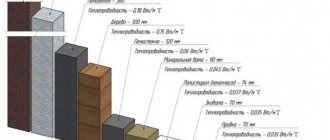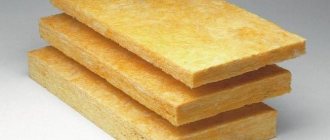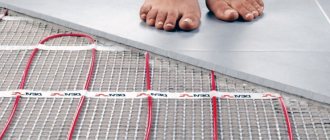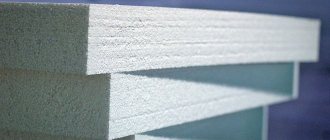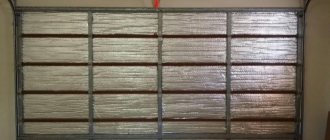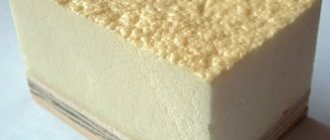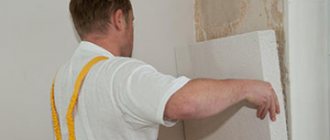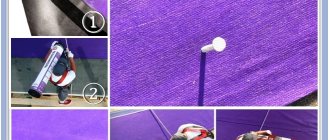According to some beekeepers, insulating hives for the winter does not make any sense. For this reason, their charges spend the winter outside. In reality, there is nothing to worry about here, since the bees, being left to their own devices, will be able to make the final flight before frost and the first one in the spring, when they feel that it has noticeably warmed up. However, most owners still insulate their hives for the winter. How to do this and how to avoid common mistakes during work will be discussed in today’s article.
- 1 Selection of material for insulating hives 1.1 Option No. 1. Plastic or foam
- 1.2 Option No. 2. Mineral wool, other fibrous materials
- 1.3 Option No. 3. Use of improvised means
- 2.1 Ventilation is an important point when insulating for the winter
Choosing a wintering site
For wintering bees, you can choose any room that has enough space for several hives. The main thing is to observe the following conditions in the bees’ winter home:
- Low humidity;
- Air temperature inside and outside the hive;
- No noise;
- Lack of light.
In the garage
If you want to leave the apiary in the garage during the winter, take care of sound insulation. Chances are there are neighboring garages nearby. This means that cars will regularly pass near your box. They bother insects. Insects eat more honey and overload the intestines. Families become weak by spring.
Insulate the garage with foam or mineral wool. Thermal insulation must be done inside and outside. Seal the cracks. Install an electric convector and maintain the temperature at 6-8 degrees above zero.
Make a vapor barrier. Cover the room with plastic film.
In the cellar
To winter bees in a basement or cellar, try to choose a deep room. But if it is almost at ground level, then you will have to insulate the ceiling and walls. Don't forget that there is usually high humidity underground.
At high humidity, bee products turn sour and mold forms. The winged workers are dying of hunger. Additionally, mold weakens insect organisms. To reduce the amount of moisture in the cellar, it is necessary to drain it before leaving the apiary in it. Make a vapor barrier and provide air exchange.
In the barn
Cover the inside of the room with fiberboard or chipboard to prevent light from entering. Insulate the floor with sand, dry leaves or dense flooring. Make insulation so that it can be removed at the right time. During frosts, insulate the room additionally, and during a thaw, remove the thermal insulation.
Advice! Enter the bees' winter home as rarely as possible.
On the street
If you leave insects outside during the winter, place the hives close to each other in a row. This way the wind will not blow on their sides. To prevent the houses from being blown in front and behind, place them on one side next to bushes or a fence, and install a barrier opposite the other.
To overwinter bees in the wild, you need to properly insulate the hive. Wintering of bees outside can take place on bees or in multi-hull hives. But read about this in the next section.
In omshanik
There are three types of omshaniks: above-ground, semi-underground and underground. The best option is to use an underground room. The temperature is stable there and light does not penetrate. You just need to make sure there is good ventilation.
The effect of bee venom on the body
Bee venom therapy dates back to the era of Hippocrates, where it was used to relieve joint pain and arthritis. In modern medicine, bee venom is used to treat multiple sclerosis, arthritis and Parkinson's disease. The activity is based on the positive effects of the anaphylactic reaction on metabolism and organelles, especially the respiratory system. Bee venom demonstrates effectiveness against HIV , and its effectiveness against H1N1 provides hope for additional therapy for protection against SARS-CoV-2. Allergens may help fight COVID-19. Bee venom can cause an increase in specific IgE and IgG antibodies and leads to the production of IgE antibodies that can react to various antigens. Although IgE is responsible for allergy outbreaks, it also plays a protective role against a wide range of allergens.
Bee venom can act as an adjuvant in combination with Toll-like receptor (TLR) ligands and modulate the immune system, enhance the differentiation of foxP3-expressing cells and increase circulating regulatory T cells. Bee venom causes an increase in CD25, CD4+ T cells, and foxP3 mRNA, resulting in a shift in the bee venom-specific IgG4/IgE ratio.
Bee venom regulates the immune response and physiopathological changes and supports clinical observations in apitherapy, where immunity against COVID-19 was shown by beekeepers in Wuhan Province, People's Republic of China.
Phospholipase A2 (PLA2) bee venom can trigger mast cell maturation, plays an important role in cell signaling and for the production of key lipids, and can act as a receptor ligand. PLA2 can inhibit the flow of inflammatory cells to targets.
Bee venom can lead to long-term induced tolerance to related allergens, such as the function of reducing IgG4 levels and activating IL-10, modulating the immune system and inducing TH2 to TH1 bias.
Melittin (APi M 1) can be used to create mimotopes. The bee venom component APi M 10 (icarapine) activates effector cells in patients with bee venom allergy. Since IgE has an epitope for APi M 10, this may provide an opportunity for adjuvant development. Bee venom antigens can be used as adjuvants for pain relief, and the effect of melittin on the formation of cell membrane pores, leading to apoptosis, serves to enhance adjuvant properties.
Bee venom also has antiviral properties. Bee venom can desensitize mast cells and basophils and suppress innate lymphoid cells. Bee venom components can inhibit protein synthesis, induce angiogenesis, and activate caspase-3-8-9.
The best hives for wintering
Comparing the Dadanovsky hive and the sun lounger as a place for wintering insects, beekeepers are more inclined to the second option. Wintering of bees on bees is dry. Such houses have good ventilation. There is never enough death.
If you are going to use wooden hives for wintering, then you will have to insulate them. A convenient option for wintering bees outside without insulation are hives made of polystyrene foam. There is no need to install warm side blocks and pillows in them. The material does not rot.
Polystyrene foam maintains a stable temperature in the houses. The air inside does not heat up or cool down, despite the fact that winter in central Russia is characterized by a large temperature difference.
Furry workers wintering in polystyrene foam houses begin their spring migration 2 weeks earlier. Families approach the honey harvest period in strong condition.
PPS hives require increased ventilation. Otherwise, the temperature in the house will be higher than normal. During wintering, the bees are located tightly in a ball. If the hive is warmer than necessary, then the insects crawl away from each other and become more active. They spend energy faster and eat more honey to replenish it. Firstly, the family will weaken by spring due to heavy loads on the intestines. Secondly, it makes sense to save honey.
The material does not absorb moisture, but all water flows to the bottom. Make a hole in the bottom and leave it open until spring. The entrance should be open 5 cm.
How to make a beehive from polystyrene foam?
A typical polystyrene foam object is a 44x25 cm enclosure that has a lid, bottom and feeder. Wooden frames weighing about 10-12 kg are mounted inside it.
To manufacture the structure you will need the following materials and tools:
- expanded polystyrene sheet;
- wood screws 5-7 cm long;
- fine-grain sandpaper;
- liquid Nails;
- aluminum mesh with cell sizes up to 3.5 mm;
- water-based paint mixture;
- steel corner;
- a circular saw or stationery knife with a reliable, hard blade to ensure the evenness of the parts being cut out;
- screwdriver;
- metal ruler at least 100 cm long.
To make a bee hive you need to follow this plan:
- Mark a sheet of polystyrene foam using a regular felt-tip pen and a metal ruler, and then cut out all the fragments for the future design. Sand the edges with sandpaper to ensure evenness.
- Using a utility knife or saw, make “quarters” along each wall, the size of which is equal to half the thickness of the polystyrene foam sheet. They are necessary to connect structural fragments together.
- Place both walls of the housing so that the protrusions fit into the grooves, and then apply liquid nails to the joints.
- As soon as the glue dries and the joints are fixed, tighten the structure from the outside with self-tapping screws in increments of 10-12 cm. Each of them needs to be deepened 5 mm into the thickness of the sheet.
- Assemble the finished housings of each segment into one structure, placing the upper part on the lower part. Make sure that there are no gaps or cracks during assembly, as they will negatively affect the thermal insulation of the house.
A beehive can be insulated with tiles, the thickness of which corresponds to the size of the finished product, but varies within 2 cm, 3 cm or 5 cm.
Top dressing
For one family in winter it is required to leave 20-25 kg of honey. The amount of honey for wintering depends on the air temperature inside the hive. If it remains normal without fluctuations, then the sweet mass is consumed optimally. When the temperature rises or falls, bees eat food faster.
You should not give honey and honeydew to insects. If they consume such food, substances that cannot be digested will form in the stomach. The insects will die.
Check the quality of honey. Pour a liter of quicklime into a 2-liter jar, fill the rest with water. Let the solution settle. In another container, mix the treat with water, and then pour the mixture with lime into it. If flakes appear, then such honey should not be given to bees.
In addition to honey, insects are given sugar syrup, kandi and potato mixture in winter. To prepare the syrup, boil a liter of water and add 2 kg of sugar. Stir until a viscous mass forms.
We prepare honey kandi from powdered sugar, honey, water and acetic acid. At home, boil 2.5 kg of honey to a temperature of 55 degrees to kill the microbes in it. Cool and mix the bee treat with powdered sugar. Add sugar gradually. In total you need to add 7.5 kg. Pour 200 ml of water and 20 ml of vinegar into the dough.
To make food with potato juice, you first need to prepare sugar syrup. Pass the peeled potatoes through a meat grinder, blender or grater and extract the juice from them. For one liter of sugar syrup, add 60 ml of juice.
Why is it necessary to insulate the hive?
Overwintering of bees occurs as follows: after stopping flights and collecting honey, the insects are “sealed” inside the hive, where they gather in dense balls and warm each other with heat. If the temperature drops below the permissible limit, the activity of the bees will increase and food consumption will be greater. However, there is no guarantee that the swarm will survive the winter at all. This is precisely the reason for the need to insulate the beehive.
Properly organized events for successful wintering also ensure the safety and “fighting efficiency” of the bee colony. Next year it will be stronger and stronger, so such work must be done for bees in the fall.
Activities before wintering
There are a number of necessary measures that are recommended to be carried out before wintering. Assembly, insulation of hives, ventilation design and insect treatment.
Assembling nests
There are 3 ways to assemble a bee nest:
- Double-sided. Insert 8 frames into the hive. Fill the central frames with 2 kg of honey, the outer ones with 3 kg, and the ones between them with 2.5 kg of honey in each frame.
- Unilateral. Add 3 kg of honey to the first frame; in the second – 1.5 kg; in the third, fourth and fifth – 2 kg each; in the 6th – 2.5; at 7 and 8 – 3 each.
- Beard. This method involves economical consumption of honey. Add 2 kg to the central frames. The closer the frames are to the edge, the less honey they should contain.
In multi-hull hives, store food in the upper housing and insects and brood in the lower one.
Warming the hive
There should be a 50 cm layer of snow on the roof of the hive. It provides thermal insulation.
When insulating, it is necessary to line the bottom, side walls and top of the hive with heat-insulating material. For this purpose, use polystyrene foam, polyurethane foam, dense polyethylene or straw, fiberboard. If you will be the last to insulate, coat the material with drying oil. Do not insulate the hive too much so that the bees do not get excited.
Ventilation
Ventilation is carried out through tapholes. In polystyrene foam hives, air circulation is ensured, in addition to the entrance, by a hole at the bottom. Firstly, it removes water from the hive. Secondly, a house made of PPS needs additional ventilation to maintain the temperature at normal levels.
The entrances must be covered from snow or rain. In frosty weather, the summerhouse becomes covered with frost, and ventilation deteriorates. In this case, open the tapholes wider or make a hole in the roof.
Insect treatment
After collecting the honey, insert the formic acid bags into the frames. In multi-hull hives, one bag weighing 30 grams is stored for a week. This will protect flying workers from ticks.
Application of electric heaters
It is known that a bee colony is able to independently maintain the required temperature inside the hive. However, in regions with harsh climates, bees need additional insulation of their nests. At the same time, external insulation measures are not always sufficient to save the family, so it is necessary to do internal heating of the hives.
To maintain warmth and dryness inside the nest, as well as to reduce food consumption, it is optimal to use electric heating. This will relieve the bees' fecal load and prevent them from developing diarrhea. Using a heater will allow you to slightly expand the entrance and provide additional ventilation, which in turn will eliminate excess moisture and serve as a prevention of nosematosis, ascospherosis and varroatosis.
You can build electric heating with your own hands using ordinary lamps pre-wrapped in foil. And if you have some skills, you can try to create a worthy alternative to a factory heater by building a frame structure.
Breeding bees in our climate has its own characteristics. Despite the fact that these insects do an excellent job of temperature regulation on their own, experienced beekeepers still advise helping them in this matter. That is why the topic of our article is insulating hives for the winter. You will find features and useful tips on these issues below.
Tips and tricks
Preparing bees for winter begins with checking the brood and queens.
Inspect colonies for fertile queens. The hive must have at least 4 frames completely filled with brood. If this is not enough, take frames with eggs and larvae from other hives.
Replace old honeycombs. If they are dark, filled only with drones, or light cells in which insects have not yet hatched, the combs need to be replaced. If there is brood in such cells, then the frames with them should be placed on the edge.
The furry workers must fly over before the weather turns bad. Until approximately September 25th. If they fly, they will not cleanse the intestines. Then they will defecate in the hive. This will lead to mass death.
Young individuals also fly around before wintering. The queens must lay eggs a month before the last flight. If they have collected enough nectar by this time, they will make brood. If the queens have not taken bribes, then feed them.
If the weather is good in October, allow the flying workers to fly away at this time. You can induce insects to fly by knocking. The later they empty their intestines of feces, the better they will winter.
Move the apiary closer to honey plants. Then the bees will provide themselves with a sufficient amount of food supplies and raise offspring by spring.
To prevent mice from getting into the hive, place glass on the entrances. Rodents' paws will slip when trying to get inside. Cover the top of the hive with a fine mesh net.
Toxicity of bee venom against COVID-19
Bee venom is cytotoxic at high doses, however non-cytotoxic concentrations of bee venom ranging from 1 to 3 μg/ml show significant therapeutic potential. Low doses, controlled concentrations and diluted bee venom produce a range of anti-inflammatory responses and are used to treat diabetes, rheumatoid arthritis (RA), heart disease, obesity, asthma, skin diseases and diseases of the central nervous system, nervous system diseases such as Alzheimer's disease, Parkinson's disease and sclerosis. At low doses, bee venom can suppress inflammatory cytokines such as interleukin-6 (IL-6), IL-8, interferon-γ (IFN-γ), and tumor necrosis factor-α (TNF-α). Reductions in signaling pathways responsible for the activation of inflammatory cytokines such as nuclear factor-kappa B (NF-κB), extracellular signal-regulated kinase (ERK1/2) and protein kinase Akt and lipopolysaccharide (PgLPS)-treated human keratinocytes were associated with treatments including bee venom
Bee venom has been used as an anti-inflammatory agent by combining bee venom compounds, i.e. secretory phospholipase A2, with phosphatidylinositol bisphosphate or cells, mainly dendritic cells (DCs), or combining bee venom with DCs. Conjugation of hormone receptors and gene therapy transporters to bee venom peptides as a useful new targeted therapy to positively modulate immune responses has been applied in antitumor and anti-inflammatory therapy.
The bees left their stings on the beekeeper's hand. Three bee stings are a good “vaccination”!
Immune responses to bee venom are toxic in high doses, but when controlled or diluted (controlled concentrations), these immune responses can serve as immunomodulators. Controlled allergic immunity may be useful in protecting the patient from antigens and pathogens, including RNA viruses. Bee venom can stimulate type 2 immune responses, type 2 immunity is initiated by antibodies to T cells (T helper cells type 2) and immunoglobulin (Ig (IgE and IgG1), as well as the action of the innate immune system such as epithelium and white blood cells and serves as a protective barrier to eliminate antigens. Group III BV SPLA2 exhibits effects on the immune system in vitro and in vivo. Modulated immune responses from bee venom may alleviate immunological diseases such as rheumatoid arthritis, inflammatory diseases, asthma and Parkinson's disease. Innate immune system induces protective immune response against bee venom antigens through pattern recognition receptors (PRRs), including Toll-like receptors found in molecular patterns associated with pathogen-associated molecular patterns (PAMPs).Bee venom in therapeutic disease is an anti-inflammatory agent that reduces the number of infiltrated inflammatory cells and the expression of tumor necrosis factor (TNF)-α, interleukin (IL)-1β, Toll-like receptor (TLR) 2 inhibition and CD14. Bee venom also inhibits nuclear factor-κB (NF-κB) and activator protein (AP)-1 binding potential. The human IL-1 receptor (anakinra) also exhibits anti-inflammatory activity, but information linking this receptor and bee venom remains sparse.
Bee venom phospholipase 2 (bvPLA2) is a major bee venom allergen and stimulates the innate immune system by binding to pattern recognition receptors (PRRs), such as Toll-like receptors, which recognize pathogen-associated molecular patterns (PAMPs), triggering a type 2 immune response. . bvPLA2 induces T helper cell and group 2 innate lymphoid cell (ILC2)-type responses, which are facilitated by the enzymatic breakdown of membrane phospholipids and the secretion of IL-33. bvPLA2 also induces the production of IgE, which has been shown to protect against future allergic/immunological reactions (in the case of a lethal dose of bee venom). PLA2 plays a vital role in patient protection in Th2 differentiation, ILC2 activation, immunoglobulin production, membrane remodeling and anti-inflammatory responses.
Bee venom shows a positive immunomodulatory role, reducing tumor progression and activating the immune system by combining bvPLA2 with phosphatidylinositol (3,4)-bisphosphate or cells, mainly dendritic cells (DCs). DCs produced with bee venom in vivo have both anticancer and antiviral properties. DCs, in combination with tumor or viral antigens, produce major histocompatibility complex (MHC) class I and II peptide epitopes for CD8 and CD4 T lymphocytes.
PLA2 (bvPLA2-H34Q) binds to the membrane and in vivo combines antigens with the membrane of human DC cells, causing stimulation of CD8 T cells, and antiviral and antitumor vaccines (DC vaccine) can be produced from bee venom using DCs. These cell-based antiviral/antitumor vaccines are used during immunization against viruses, including cytomegalovirus, and for tumor suppression. Bee venom is a well-known adjuvant-enhanced antimicrobial and antitumor vaccine. Melittin, bvPLA2 and phosphatidylinositol-(3,4)-bisphosphate are effective adjuvants against leishmania, antitumor and anticytomegalovirus vaccines. Conjugation of bee venom peptides to hormone receptors and gene therapy can positively modulate immune responses. Targeted antitumor and anti-inflammatory treatment methods are used.
Bee venom can be used as an analgesic in controlled doses; inhibition of cyclooxygenase activity and blocking of the prostaglandin synthetase system, resulting in antipyretic, anti-inflammatory and antinociceptive/analgesic cascades. In diluted form, bee venom can cause antinociceptive effects through α-adrenergic receptors (activation of spinal α-adrenergic receptors). Conjugation of bee venom peptides to protein receptors such as hormones and peptide transport genes provides innovative bee venom-controlled anti-inflammatory, antinociceptive and immunomodulatory therapies.
Pharmacodynamics of bee venom components
Bee venom contains enzymes (phospholipase A2 (PLA2), phospholipase B, hyaluronidases, acid phosphatases, acid phosphomonesterases, α-D-glucosidases and lysophospholipases); peptides (lytic peptide melittin, apamin, degranulating peptide of mast cells (mast cells), secapin, pamin, minimin, procamine A, B, protease inhibitor, trettiapine, cardiopep and adolapine); and amino acids include g-aminobutyric acid and a-amino acid. Non-peptide components include amines (dopamine, histamine, norepinephrine, neurotransmitters), carbohydrates (glucose, fructose), pheromones (isopentyl acetate; n-butyl acetate; isopentanol; n-hexyl acetate; n-octyl acetate; 2-nonanol; n-decyl acetate; benzyl acetate; benzyl alcohol; and (2) -11-eicosen-1-ol).
Bee venom has been shown to have anti-inflammatory, antinociceptive, antioxidant and anti-apoptotic properties and has been shown to alter gene expression and fibrosis. Side effects include pro-inflammation (higher doses of PLA2, mast cell degranulating peptides, hemolytic compounds (melittin)), allergic reactions to protease inhibitors and peptides, anaphylactic reactions and death.
Multiple protein allergens in bee venom are responsible for the allergic reaction. Allergic reactions can occur in the respiratory system, gastrointestinal tract, cardiovascular system, skin from bites and can lead to severe anaphylactic shock, sometimes leading to cerebral or myocardial ischemia. The non-immune-mediated mechanism of bee venom allergy involves the production of the mediators bradykinin (BK), which leads to anaphylaxis as a result of activation of PLA2 by melittin (mimicking BK).
The body's response to bee venom
Bee venom therapy may alleviate immune diseases. Bee venom secretory phospholipase A2 exhibits in vitro and in vivo activity in the immune system and is used to treat asthma, Parkinson's disease, and drug-induced organ inflammation. Immune reactions to bee venom can be dangerous when highly elevated, but when controlled, allergic immunity can be beneficial in human defense to stimulate type 2 immune responses. Type 2 immunity is mainly based on barrier defense, and these responses are initiated by T helper type 2 (TH2), immunoglobulins E and G1 (IgE and IgG1), antibodies and other components of the innate immune system (epithelial barriers, innate lymphoid) cells - ILC , eosinophils, mast cells, basophils and activated macrophages). The innate immune system senses venom components, inducing a protective immune response against antigens through pattern recognition receptors (PROs), such as Toll-like receptors found on pathogen-associated molecular patterns (PAMPs).
The anti-inflammatory properties of bee venom can suppress the activity of inflammatory antigens, reduce the number of infiltrated inflammatory cells, and suppress the expression of (TNF)-α, IL-1β, Toll-like receptor (TLR) 2, and CD14 expression. , inhibiting the binding activity of nuclear factor-κB (NF-κB) and activator protein (AP)-1. The major allergen of Bet V 1, PLA2, stimulates the innate immune system by binding to PRRs, such as Toll-like receptors, which recognize PAMPs, inducing a type 2 immune response. PLA2 in BV induces T helper 2 (Th2) cell type responses and group 2 innate lymphoid cell (ILC2) activation through enzymatic degradation of membrane phospholipids and secretion of IL-33. PLA2 induces IgE production, protecting against future allergic/immunological reactions in the event of a lethal dose of bee venom; PLA2 plays a critical role in human defense by enhancing Th2 differentiation, ILC2 activation, immunoglobulin production, membrane remodeling, and anti-inflammatory responses.
Anti-inflammatory potential of bee venom
Low doses of bee venom produce a range of anti-inflammatory responses that have been studied in diabetes, rheumatoid arthritis (RA), heart disease, obesity, asthma, skin diseases and diseases associated with the central nervous system (Alzheimer's disease, Parkinson's disease, etc.) sclerosis). Bee venom suppresses inflammatory cytokines, including interleukin-6 (IL-6), IL-8, interferon-γ (IFN-γ), and tumor necrosis factor-α (TNF-α). Reductions in signaling pathways responsible for the activation of inflammatory cytokines, nuclear factor-kappa B (NF-κB), extracellular signal-regulated kinases (ERK1/2), protein kinase Akt, and human Porphyromonas gingivalis lipopolysaccharide (PgLPS) keratinocytes are associated with melittin treatment (65 ) (Fig. 2).
Checking the habitat of bees in winter
If the wintering of insects is organized in compliance with all the rules, there is no need to check and disturb the bees. In practice, most beekeepers prefer to periodically visit hibernating insects. This is done in compliance with certain rules:
- To look inside the hive, remove the lid. This work is done with great care, without making unnecessary noise.
- The weather during testing should be warm and without wind. At the same time, it may be cloudy so that the bees do not want to fly around.
This video shows how to inspect bees in winter:
In order not to open the lid of the house, you can determine what sound is coming from the hive. If it is quiet, then everything is fine in the hive, so the bees should not be disturbed.
Bee venom in the treatment of cancer
Bee venom has been studied for cancer; melittin is considered cytolytic but nonspecific. Melittin can disrupt the lipid bilayer of the membrane and exhibits toxicity when administered intravenously. APi M has the ability to suppress tumor growth in breast, liver, prostate and lung cancer cells. In vitro and in vivo studies indicate that melittin can suppress cancer cell growth by inhibiting NF-κB signaling and activating caspase 3 and 9 pathways. Inhibition of hepatocellular carcinoma cell motility has been observed in vitro and in vivo through inhibition of Rac1-dependent pathways.

